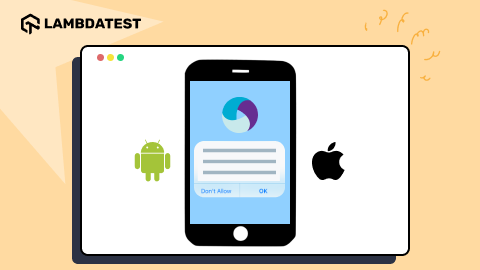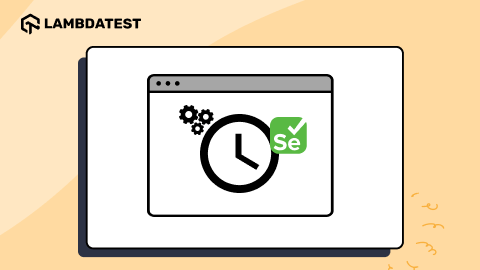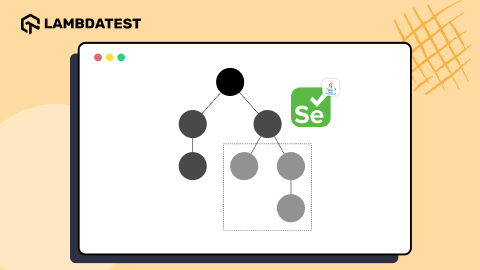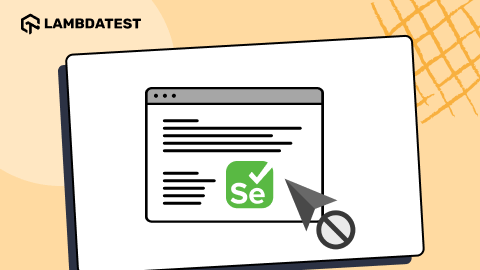All posts by Faisal Khatri
• Tutorial • Automation • Selenium Tutorial
How To Take Full Page Screenshots In Selenium WebDriver
Taking screenshots is one of the most common actions for any web page tester. Screenshots or videos are essential when reporting bugs, as they provide visual evidence of issues.
July 9, 2024
![]() 272209 Views
272209 Views
![]() 19 Min Read
19 Min Read
• Automation • Selenium Tutorial • Tutorial
Selenium Grid Tutorial: Parallel Testing Guide with Examples
Selenium Grid, an essential component of the Selenium suite, enables you to run test cases simultaneously in different browsers and browser versions.
July 8, 2024
![]() 337904 Views
337904 Views
![]() 17 Min Read
17 Min Read
• Automation • Selenium JavaScript • Tutorial • WebDriverIO
How to Run WebdriverIO Tests: Getting Started Tutorial
WebdriverIO is a widely used JavaScript testing framework for automating tests on web and mobile applications. It’s known for its simplicity and the ability to control browsers with just a few lines of code.
July 2, 2024
![]() 233228 Views
233228 Views
![]() 17 Min Read
17 Min Read
• Selenium WebDriver • Automation • Tutorial
How to Use Breakpoints for Debugging in Selenium WebDriver
Testers using Selenium WebDriver often deal with flaky tests, tricky element locators, and the unpredictable timing of WebElements. Therefore, debugging in Selenium WebDriver becomes essential to stabilize tests, ensure everything works across different browsers, and handle complex data interactions.
June 21, 2024
![]() 389249 Views
389249 Views
![]() 7 Min Read
7 Min Read
• Automation • Selenium Java • Tutorial
How to Create TestNG.xml File in Eclipse
TestNG is a framework used for Java automation testing that makes creating and running automated tests much easier. One of its standout features is running tests in parallel using a TestNG.xml file, which expedites software release cycles.
June 21, 2024
![]() 246585 Views
246585 Views
![]() 14 Min Read
14 Min Read
Handling Alerts and Popups in Appium
It is common for any mobile application to show alerts and popups. These alerts and popups prompt users to grant various permissions, like contacts, notifications, etc. However, they need to be handled when performing mobile application testing.
May 8, 2024
![]() 126959 Views
126959 Views
![]() 13 Min Read
13 Min Read
• Selenium Java • Automation • Tutorial
How to Use Thread.sleep() in Selenium
When performing Selenium automation testing, you might encounter a NoSuchElementException() when the element you’re trying to interact with isn’t found.
April 25, 2024
![]() 202233 Views
202233 Views
![]() 20 Min Read
20 Min Read
• Automation • Selenium Java • Tutorial
How to Handle Shadow Root in Selenium Java
When automating tests using Selenium, there may be a scenario where you can’t find an element on a web page even though it seems to be in the Document Object Model (DOM).
April 22, 2024
![]() 133650 Views
133650 Views
![]() 19 Min Read
19 Min Read
• Mobile App Testing • Tutorial
How To Perform React Native Testing Using Appium
With the technology emerging so fast, mobile apps have captured most of the industry market. Every organization is focused on creating a new app for their business platform, and the React Native framework is trending in developing mobile apps.
April 12, 2024
![]() 205707 Views
205707 Views
![]() 30 Min Read
30 Min Read
• Automation • Selenium Java • Tutorial
Handling “Element is Not Clickable at Point” Exception in Selenium
In Selenium automation testing, locators help identify and interact with any element on the web page. For example, ID, Name, ClassName, XPath, CSS Selector, TagName, LinkText, and Partial LinkText are widely used to help you interact with the elements on the web page.
March 28, 2024
![]() 358711 Views
358711 Views
![]() 9 Min Read
9 Min Read










